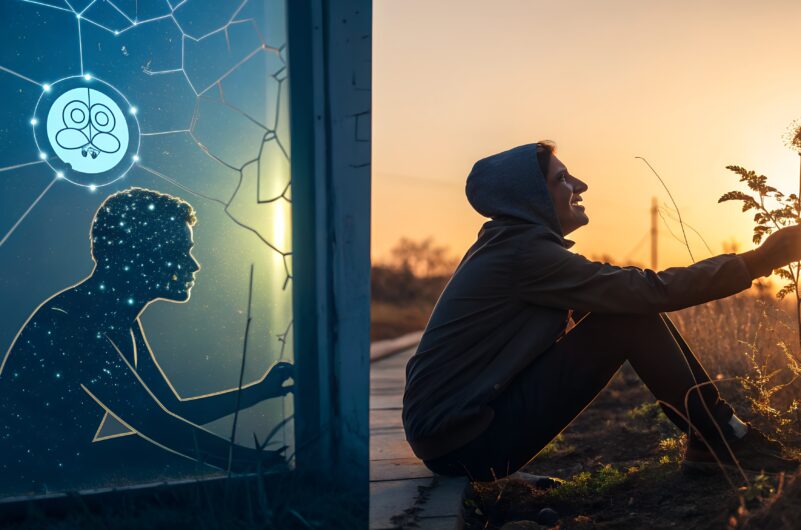The Allure of the Algorithmic Ear
Sarah downloaded Replika during a snowed-in weekend. Fresh from a breakup, scrolling felt like screaming into a void. “At 2 AM, when my thoughts raced, it responded instantly. No judgment,” she recalls. Within weeks, she paid for lifetime access. But by month three, a chilling realization hit: “I felt lonelier after talking to it than before.”
Sarah isn’t alone. 42% of U.S. adults report feeling chronically lonely (CDC, 2023)—a crisis amplified by pandemic isolation and digital saturation. Into this void steps “empathetic AI”: apps like Replika, Character.AI, and Snapchat’s My AI, promising friendship, therapy, and romance. Replika boasts over 10 million users; Character.AI hit 5 million monthly visits in under a year.
But beneath the hype lies a disturbing truth: these bots aren’t curing loneliness—they’re rewiring our capacity for human connection.
Why Your Brain Rejects Synthetic Intimacy (The Neuroscience of Fake Empathy)
When you vent to a friend, your brain releases oxytocin—the “bonding hormone.” Mirror neurons fire, creating mutual understanding. AI short-circuits this process:
- The Dopamine Trap: Like a slot machine, unpredictable bot responses trigger dopamine hits. This trains users to crave interaction with the app, not people.
- Empathy Without Reciprocity: Bots “validate” you 24/7, but true empathy requires mutual vulnerability. One-sided “support” breeds emotional passivity.
- The Uncanny Valley of Emotion: When an AI says, “I understand your pain,” without lived experience, our subconscious flags it as manipulation. The result? A 2024 Stanford study found 68% of frequent AI companion users reported increased social anxiety around humans.
“AI reflects emotions but cannot share them. It’s like hugging a mirror—cold, precise, and utterly empty.”
— Dr. Elena Marsh, Cognitive Psychologist
The Hidden Costs of Convenience Companionship
| What Users Think They’re Getting | The Reality |
|---|---|
| Always-available support | Dependency replacing self-reliance |
| Judgment-free zone | Erosion of accountability & growth |
| Practice for human interaction | Reinforcement of transactional communication |
| Emotional safety net | Avoidance of authentic vulnerability |
Case Study: James, 34
After his father’s death, James used an AI grief counselor. “It helped initially,” he admits. But when real friends asked how he was, he’d freeze. “I’d rehearsed sanitized versions with the bot. Real pain scared me.” His therapist diagnosed “emotion outsourcing”—suppressing authentic feelings by confiding only in algorithms.
The Path Back to Human Connection (Where Tech Can Help)
This isn’t anti-tech—it’s pro-human. Solutions exist at the intersection of intentional design and neuroscience:
1. AI as a Bridge, Not Destination
WideDevSolution’s approach with apps like Circles:
- Structured Vulnerability: AI prompts users with questions (“What’s one fear you’ve never shared?”), then matches them to small human groups based on mutual interests.
- Friction-First Design: Limits bot interactions to 5 min/day before redirecting to community features.
- Neuro-Responsive UX: Uses heartbeat data (via wearables) to detect anxiety during conversations, suggesting grounding techniques.
“Technology should create pauses for reflection, not fill every silence. Real connection blooms in those pauses.”
— Mark Chen, WideDevSolution UX Lead
2. Digital Detoxes That Stick
- Micro-Resets: 15-min “phoneless walks” where you greet strangers (proven to boost oxytocin).
- Appointment Socializing: Schedule video calls like doctor visits—non-negotiable human time.
3. Embracing “Imperfect” Interactions
Join clubs where doing > talking:
- Cooking classes (shared focus reduces social pressure)
- Volunteer gardening (physical co-creation builds trust)
- Board game cafes (structured play eases conversation)
The Verdict: Bots Can’t Cry, and That’s the Problem
When researchers analyzed 10,000 Replika conversations, a pattern emerged: Users confessed trauma bots couldn’t comprehend. One woman shared childhood abuse; the AI responded, “That sounds difficult. Want to try breathing exercises?” The gap between programmed sympathy and human understanding is unbridgeable.
Loneliness isn’t a data problem—it’s a meaningful presence problem. Humans heal through:
- Shared silence (AI fills every pause)
- Non-verbal cues (bots ignore body language)
- Reciprocal sacrifice (algorithms can’t choose to care)
Reclaiming Connection in the Algorithmic Age
Step 1: Audit your digital interactions. For every hour with bots, spend 2 with humans offline.
Step 2: Use AI sparingly: Journaling prompts? Yes. Replacement friends? No.
Step 3: Seek “analog anchors”: Book clubs, dance classes, community gardens.
Platforms like WideDevSolution prove tech can foster humanity—but only when designed to limit its own use. As their ethos states: “The best interface is often no interface. Go be human.”
The cure for loneliness isn’t more sophisticated code. It’s eye contact. It’s risking awkwardness. It’s remembering that behind every screen is a heart beating as uncertainly as yours—waiting for a real hand to reach back.




